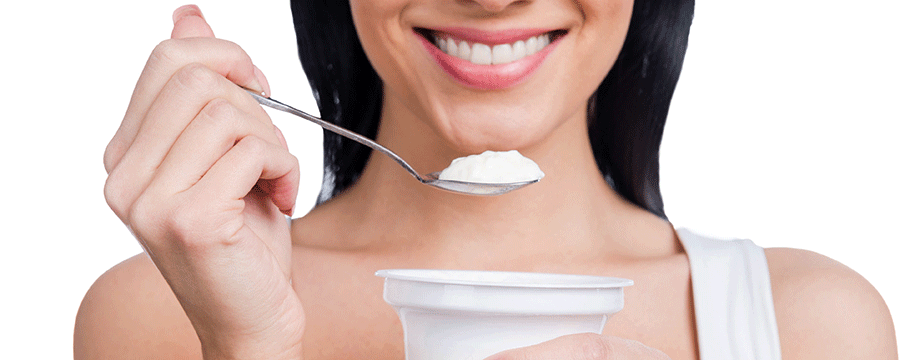The good gut guide

Justine Pattison explains why diverse and abundant gut bacteria are key to optimum health
The complex community of tiny microorganisms in your gut is called the microbiome. It contains hundreds of different types of microbes and these include bacteria, fungi and viruses. The great majority are bacteria. Most of the gut bacteria is found in the colon, or large intestine (bowel), the last part of the digestive tract where around 100 trillion bacteria are in residence. The friendly gut bacteria perform many functions that are important for our health. They manufacture vitamins, including vitamin K and some B vitamins. They also turn fibre into short-chain fatty acids, which feed the gut wall and perform many other metabolic functions.
Obese people have different gut bacteria to lean people. Animal studies have shown that transplanting poo from lean mice can make fat mice lose weight. For this reason, many scientists now believe that our gut bacteria are important in determining our weight.
Because our overall health is governed to a surprising degree by these organisms, it’s important to care for them. The study of gut microbes is in its infancy, but recent work has shown that diverse and abundant gut flora could have an impact on the following:
- Obesity and our likelihood to gain weight
- Heart disease and high cholesterol
- Inflammatory diseases, especially those connected to the bowel
- Blood sugar control
- Brain function and mental health
- Immunity against disease
Microbes consist of bacteria, fungi, viruses and other types of tiny organisms. The complex community of microorganisms in your gut is called the gut flora or gut microbiome (or microbiota). The composition of gut flora can change over time and according to diet. The balance of microbes in your gut depends on your diet. Certain microbes adapt according to what you eat, so someone who has a high-sugar diet is more likely to have a larger number of one bacteria, whereas a person who eats a lot of meat is more likely to have a larger number of another. Scientists are just beginning to work out the impact that this balance has on our health. It is believed that a diverse variety of microbes in your gut can hold the key to a range of health benefits.
Did you know?
- There are relatively few bacteria found in the stomach and small intestine, with the majority living in the large intestine (colon).
- Between 300 and 1,000 different species of bacteria can be found in the gut.
- Many species of bacteria from the gut cannot be studied outside the human body as they cannot be grown in laboratory conditions.
- There are a small number of core species that most of us carry but populations can vary widely between different people.
Grasping the gut isn’t always straightforward, especially as there’s still so much research to be done. One of the easiest ways, I think, is to imagine you’re in charge of a gorgeous garden and you want to encourage a variety of vigorous, healthy plants to grow there. The better the growing conditions, the bigger and stronger those plants will be, and the fewer aggressive weeds can break through and take over, depleting the soil and causing disease and decay.
This is similar to looking after your internal microbial garden. You need to keep the good microbes flourishing so they’ll outnumber any unwanted bacteria and viruses. You want to encourage them to multiply by feeding them all the foods they like best, a bit like giving a real garden fertiliser.
Luckily, feeding a healthy gut means feeding yourself a rich variety of delicious food. What’s more, it doesn’t take long for the changes in your gut to start taking place, with gut microbes soon adjusting to the new diet while you reap the benefits.
Three steps to a healthy microbiome
For a healthy microbiome, you’ll be eating more fermentable fibre and polyphenol-rich foods, supplemented by a regular intake of probiotics.
1. Fermentable fibre comes from plant sources, such as beans, lentils, onions, leeks and oats, and reaches the large intestine (colon) without being digested on its journey. Our microbes need this type of fibre in order to thrive and reproduce.
Did you know?
An hour after the stomach and small intestine have finished digesting a piece of food, strong contractions sweep any remaining indigestible particles out of both areas and on into the large intestine. This cleaning process can only happen between meals. It’s now thought to be crucial to efficient digestion and could explain why frequent snacking with few breaks could have a detrimental effect on the body.
2 Some other foods, such as olive oil, red wine and chocolate, contain important chemicals called polyphenols which are released when fermented by gut bacteria.
3 Probiotic foods, such as live yogurt, are teeming with good bacteria that can support the existing bacteria in the gut and help prevent harmful bacteria taking over. It’s a bit like having a peace-keeping force on board.
What are enzymes?
Enzymes are proteins which act as enablers in our bodies, speeding up chemical reactions. They’re involved in respiration as well as digestion, and outside the human body they’re used in biological washing powder and food and drink manufacture.
Some fruits contain an enzyme that breaks down gelatine, which is why you’ll never see a kiwi or pineapple jelly.
Extracted from The Healthy Gut Handbook by Justine Pattison (£14.99, Seven Dials)
Read the article "The power of probiotics" here...
Read previous Your Health articles here...
Read articles from our latest issue here...